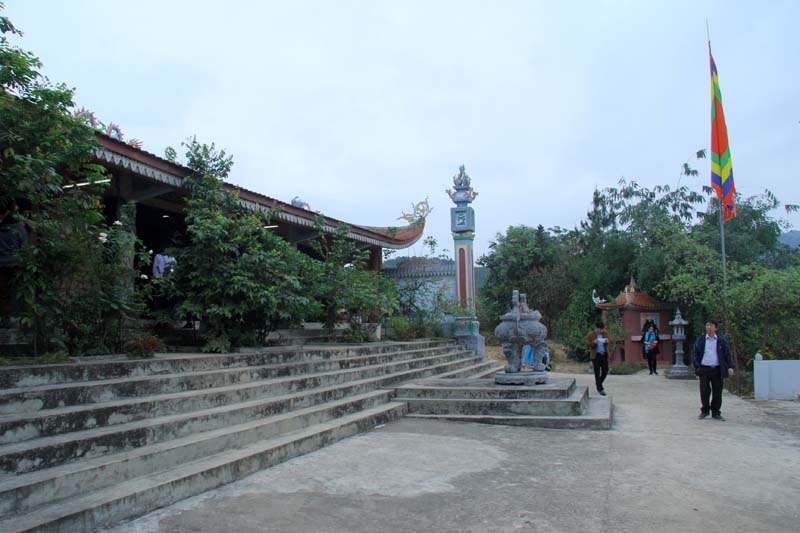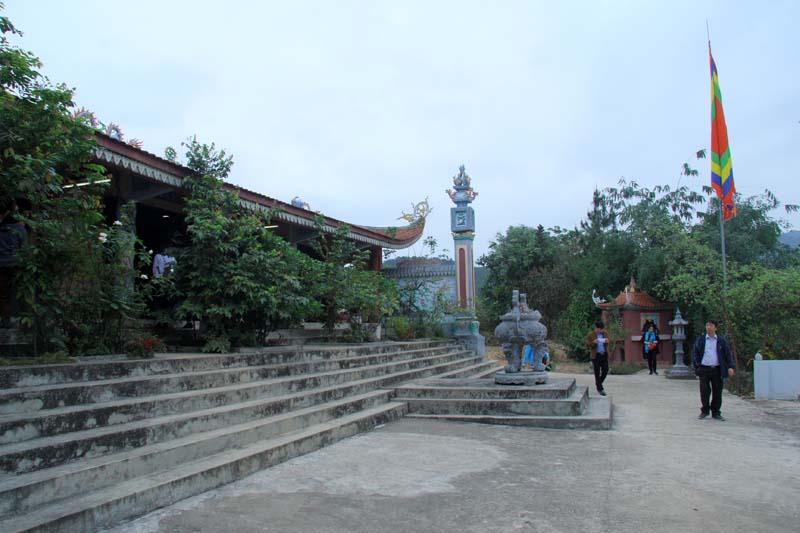
(HBO) – Hoa Binh Lake stretches 70 kilometers and spreads over 17 communes in five districts and city. There are 47 islands in the lake, including 11 limestone islands with a combined the area of 116 hectares, and 36 mountainous islands covering an area of nearly 160 hectares. The lake is described as a drawing, and billed as "Ha Long Bay” of Hoa Binh province. Besides stunning natural landscapes, the lake owns special culture of ethnic minority groups like Muong, Tay, Dao and Thai, posing potential to develop tourism products to lure visitors.
Photo: CoTemple in Hien Luong
commune, Da Bac district is a famous spiritual tourism site of Hoa Binh Lake.
The
province is directing competent authorities and localities to carry out the
overall master plan to develop the Hoa Binh Lake national tourism site approved
by the Prime Minister. Accordingly, standout tourism products should combine
the study and experience of the Muong culture and the lake’s eco-system. Also,
they should work to branch out spiritual tourism products of Thac Bo temple (in
Cao Phong and Da Bac districts), Doi Co Temple (in Hien Luong commune of Da Bac
district), ecological and resort tourist products of Sung island (in Tien Phong
commune of Da Bac) and Ngoi Hoa Bay of Hoa Lake (in Ngoi Hoa commune of Tan Lac
district), and community-based tourism in Ngoi commune (Ngoi Hoa), Tru commune
(Thai Thinh), Ke commune (Hien Luong), Da Bia commune (Tien Phong).
Priority will be given to eco-tourism, resort tourism and homestay development
in the community-based tourism site. The province will build food streets of
ethnic minority groups as well as set up tourism market along Da River./.
A diverse chain of eco-tourism and resort destinations concentrated in Hoa Binh city and the districts of Tan Lac, Da Bac, and Luong Son… Along with the launch of several key high-quality resort tourism projects, these developments have reshaped the landscape and enhanced the appeal of Hoa Binh as a travel destination.
Boasting diverse terrain, a mild climate, and rich natural resources, Cao Phong district is increasingly asserting its place on Vietnam’s tourism map, attracting both domestic and foreign visitors. The district is renowned for its stunning landscapes, majestic mountains, a crystal-clear hydropower lake, and the unique cultural identity of local ethnic groups.
With its pristine landscapes, unique cultural heritage of Muong ethnic minority, and an expanding range of visitor experiences, Tan Lac district of Hoa Binh has fast become a captivating destination for both domestic and international tourists.
Until now, Sung village in Cao Son commune, Da Bac district remains the only Dao ethnic community in Hoa Binh province to develop a community-based tourism model. Beyond its untouched natural landscapes, cultural identity serves as the cornerstone attraction for visitors.
Alongside the diverse cultural identities of the Kinh, Muong, Tay, Thai, Dao, and Mong ethnic people, Hoa Binh province is also renowned as the "capital" of the northwestern Vietnamese cuisine, offering unique and distinctive dishes. At festivals, during Lunar New Year (Tet), or on significant family or community occasions, special dishes are prepared, leaving a lasting impression on visitors.
A Phong Linh (Yellow Tabebuia) flower garden in Thang village, Thach Yen commune, Cao Phong district is currently in full bloom, drawing a large number of visitors.



